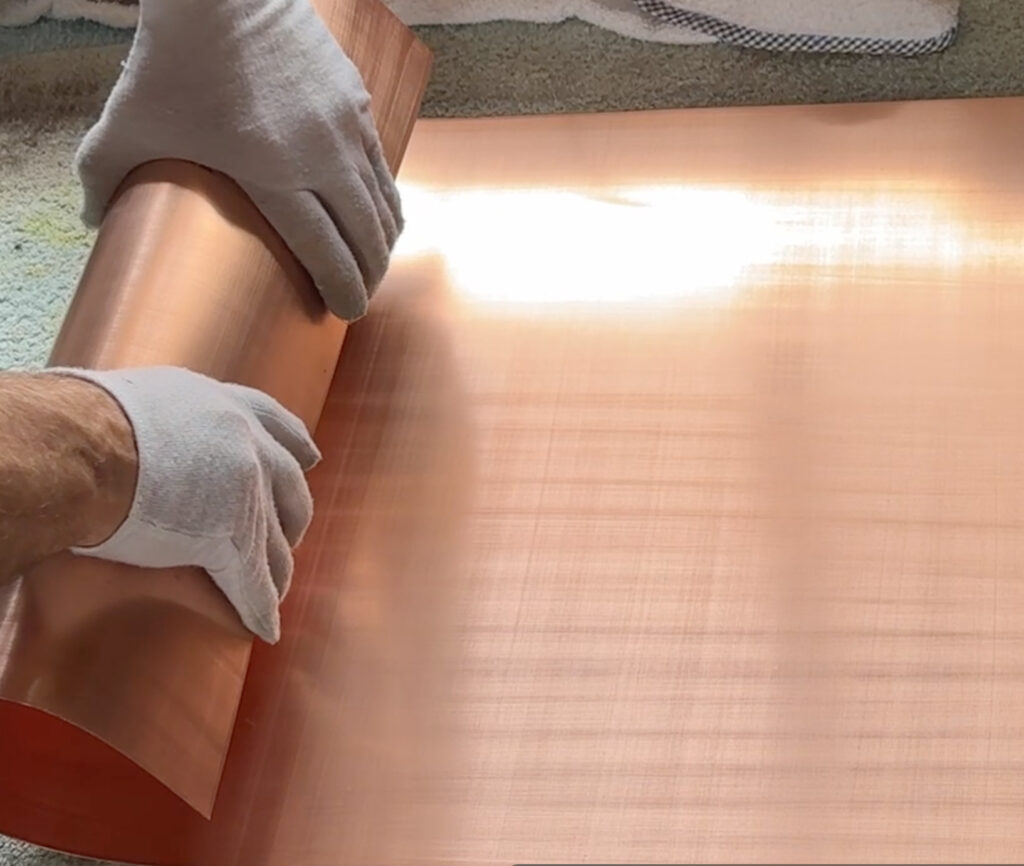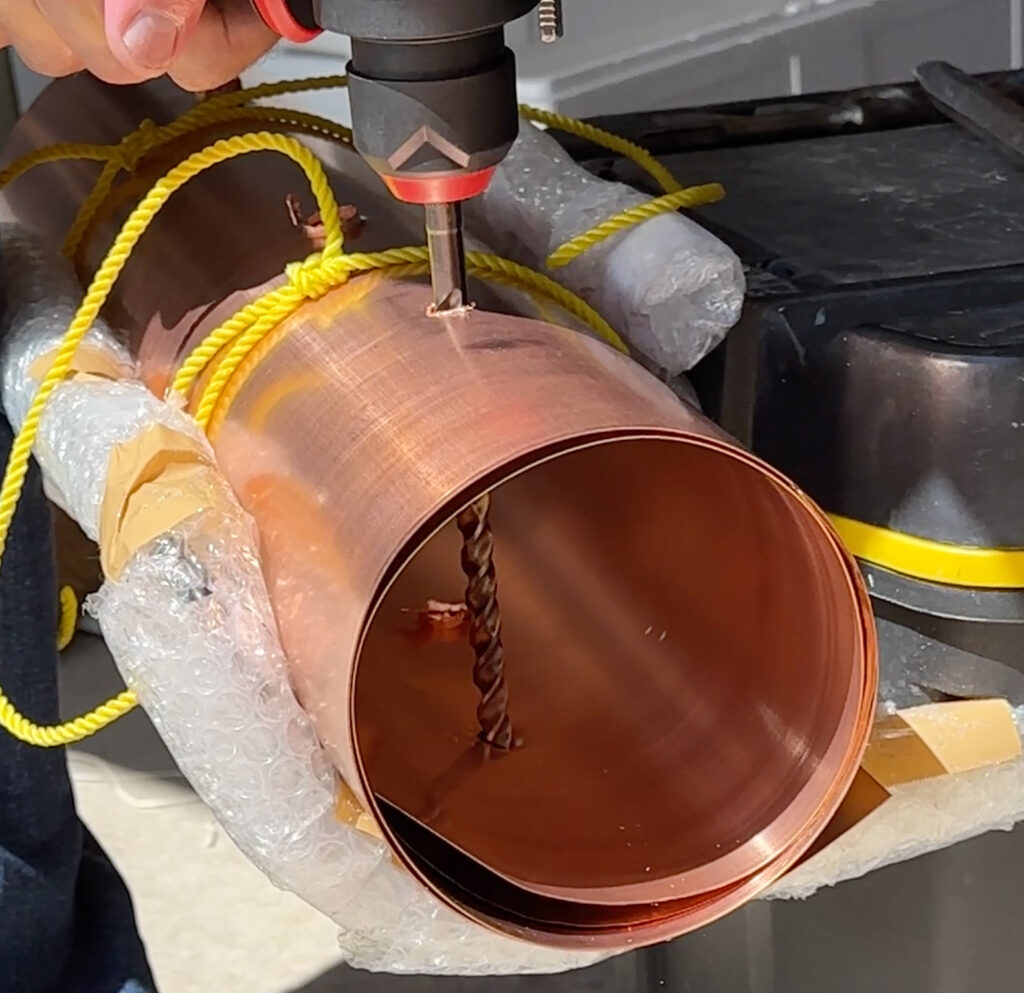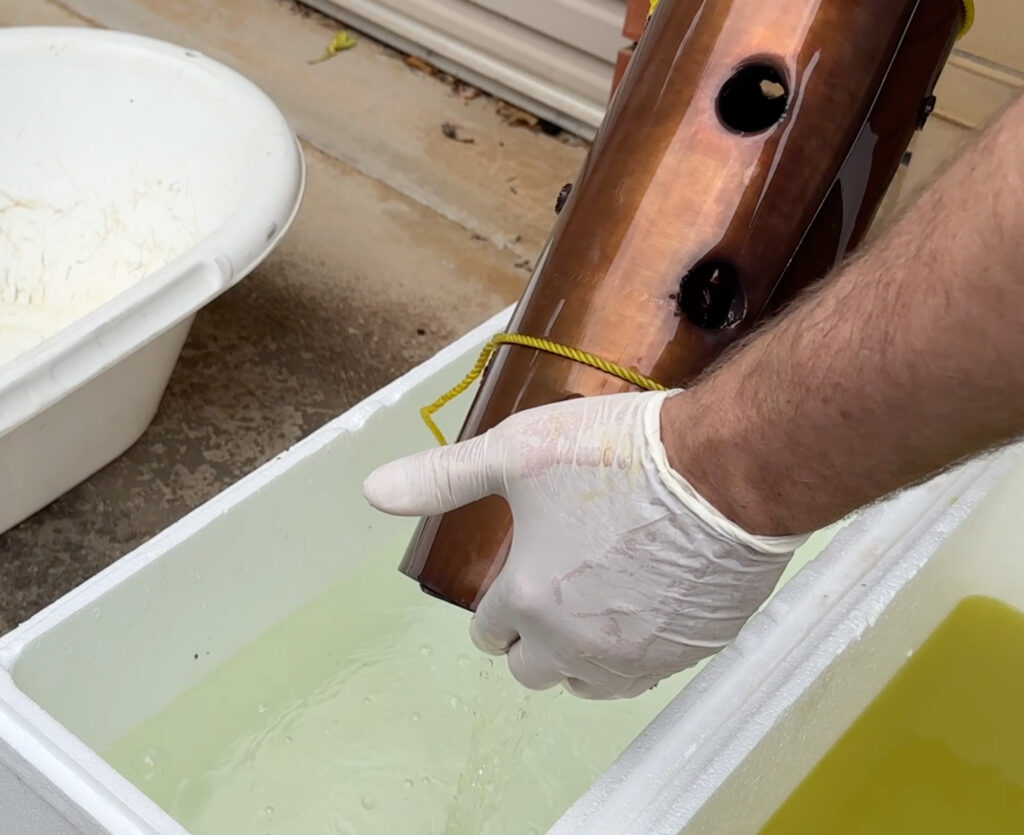Unique interconnections were established on a curved surface from what began as a clean sheet of copper. Now that the sheet is flattened out again, fresh connections emerge from the reciprocating punctures.
The resulting holes are nothing at all, but everything. The degrees to which light strikes their outer borders with differing outcomes can be used to characterise and connect them. Generating an atmosphere that ultimately fills the void with life and direction.
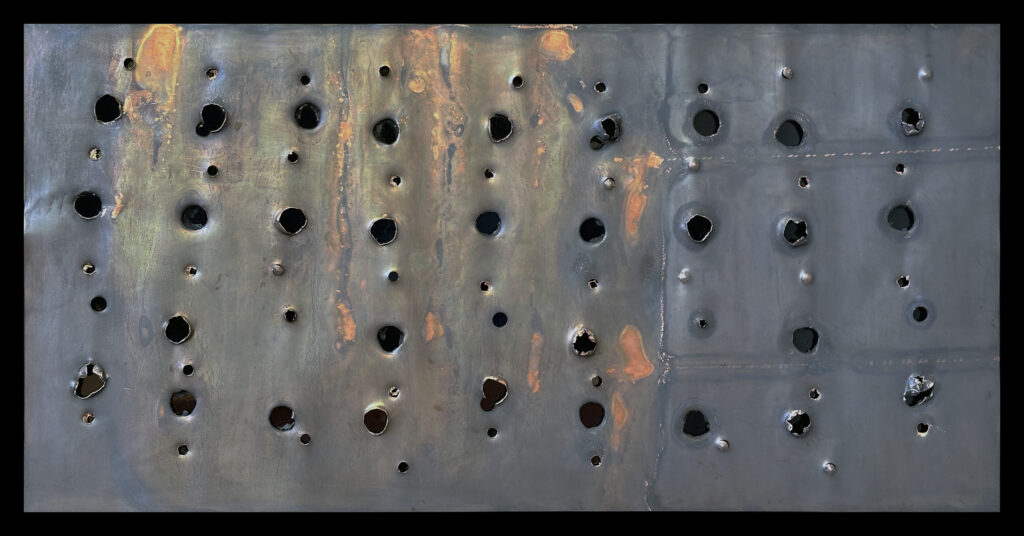
Individual marks or a wave of marks?
The art piece shown above has a textured landscape. Created by staining and a network of interconnected drill holes of different sizes. Even if each sculpture mark may seem like an isolated expression, they are all connected. Energy is deduced from the interaction of the puncture marks and shadows as reciprocating emotions that flow in a wave-like manner (horizontally). It is possible to view the expressions as having a dual character, existing both as a mark distinct from other markings and as part of a wave of expressions.
Tapestry of expressions
Malcolm’s curved canvases are worked on as three dimensional objects. However, rather than considering the interplay between solid and space – as a sculptor does, his process returns to the ‘flat two-dimensional picture plane’ (the switch from 3D to 2D). When ‘expressions’ are multiplied in this way, they intertwine on the same plane (and the reverse side) with varying degrees of value. However, it is only when the results are unraveled and revealed on the two dimensional flat plane that co-dependent relationships become apparent. Thus generating the human visual experience – a metaphor for how we observe a world that is so much greater than ourselves.
Starting with a curve
The art involves assembling a diverse range of network expressions into a cohesive whole. Therefore, the curve is critical as it provides the medium for expressions. In this particular case, life starts by rolling up a sheet of metal in such a way that the expressions can be networked. See video of the curling up process
Drilling on a curve
The drilling process is like a brushstroke made on a flat 2D plane. There is initial contact, movement across and then an exit off the surface. However, due to the fact that some of these expressions are made hidden from sight and in some instances on the other side (reserve side), the result is unique markings. Often resulting in relief, and counter relief marks, including clockwise and counter clockwise drill marks, along the horizontal line in a wave-like pattern. Hence, why I call this act a ‘quantum brushstroke’. See video of the drilling process
Unraveling the curve
At the point of creation, values are efficiently constructed in a reciprocating pattern. However, until the results are revealed on a flat surface for observation, there is no visual way of fully knowing if the expressions created have an aesthetic appeal – the reality of uncertainty meets the longing for certainty. This video shows the moment of revealing this art piece.
So, if you were to coil the artwork back up, you could follow the corresponding links again. This reminds me of FFT algorithms, which are used in everyday life to power signal processing and picture analysis. Where pictures are continually opened (uncompressed), closed (compressed), and then opened again (uncompressed). Still, we care more about what is in front of us than the disarray of how things came to be. Thus, the spectator’s experience is content consolidation with new clarity rather than the artist’s journey. Nonetheless, it is helpful to know due processes and methods as an artist who must always progress. Based on that interest, the connecting marks in the following illustrations are explained in more detail.
Observing the results on the 2D picture plane
When the expressions made in the curled up state are finally untangled and flattened out, what then becomes visually connected? As an example, the associated drill hole sets are displayed as follows:
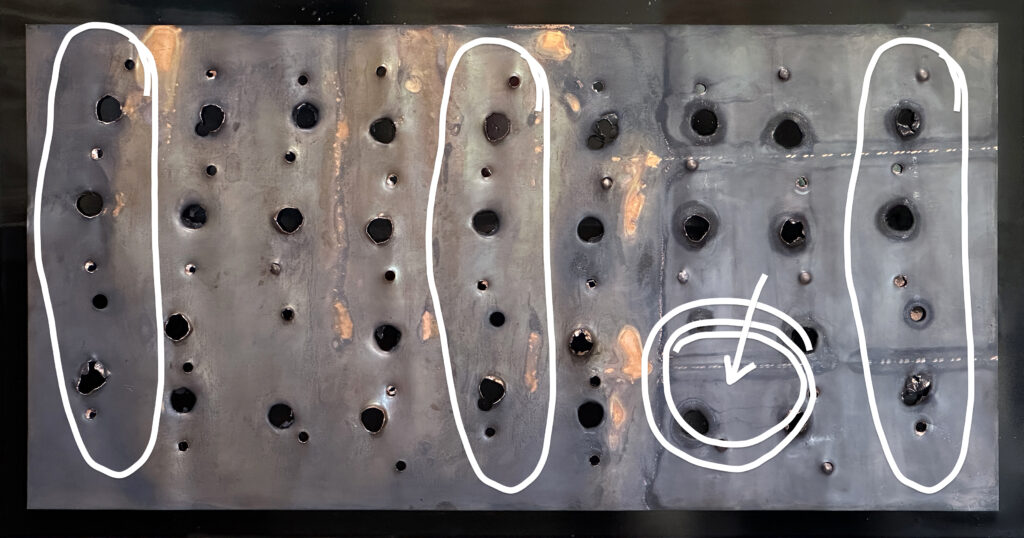
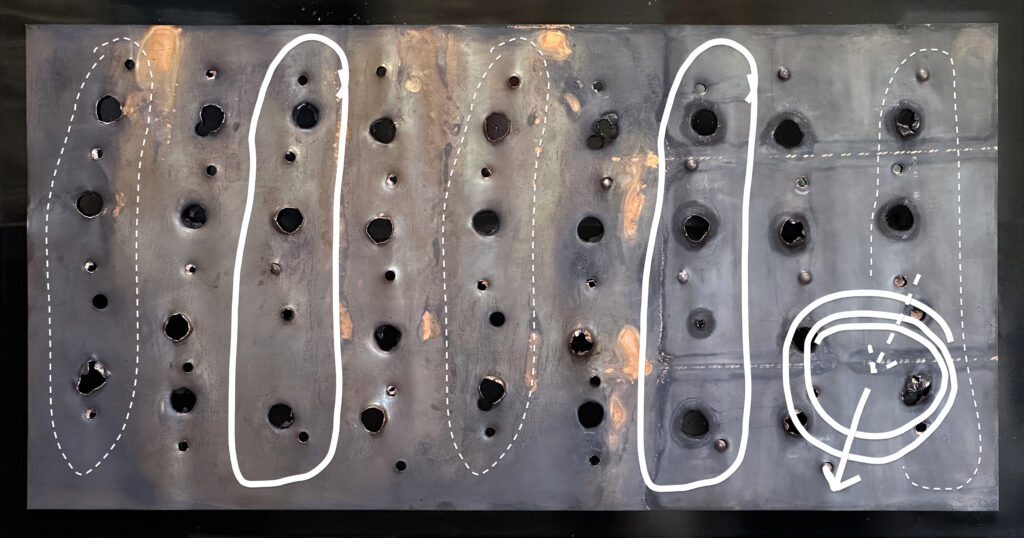
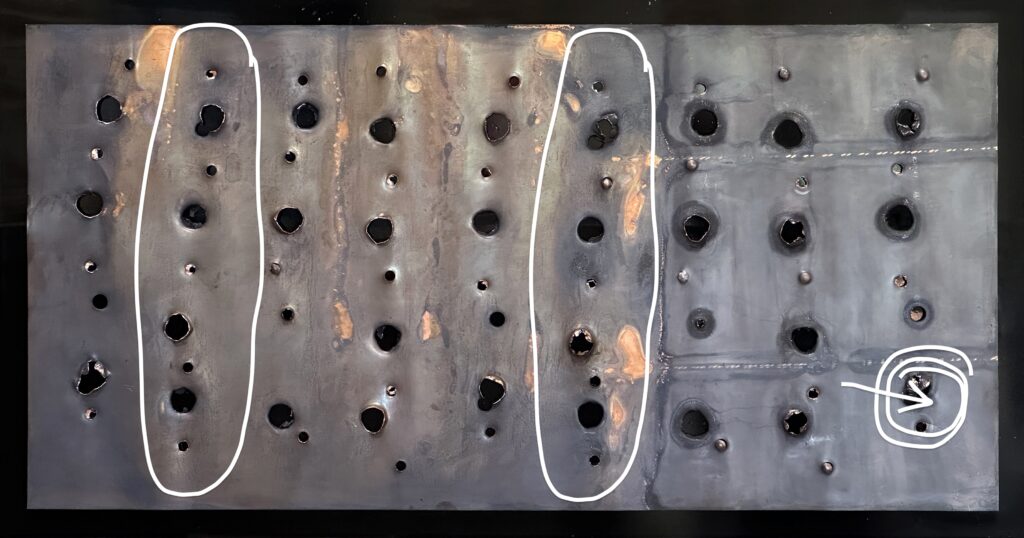
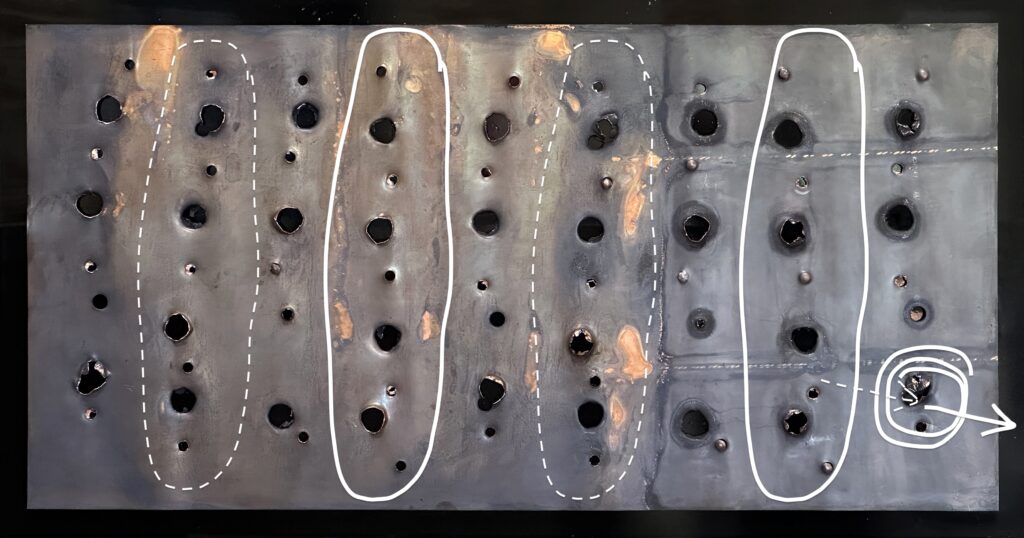
Conclusion
For an artist who uses curves almost exclusively, the reality shift from three dimensions to two dimensions cannot be replaced by any amount of forethought. As a blind method of generating marks rather than the more typical act of seeing one’s activities, this becomes a tool for assessing and comprehending the state of being in the creative moment, which is basically all about emotion. Observing the aesthetic attributes of what worked and what didn’t typically produces the aesthetic values and appeal that, in theory, lead to aesthetic appreciation and initiate a subsequent phase of introspection or meditation.
Further reading: Science meets Art: Nature becomes clearer to the observer when you compress the depth – RiAus: Biological Membranes – Surface, Undulation And Interface
About Malcolm Koch
Malcolm’s abstract expressionist work is in a style that he calls “Membrane Art”. A working practice that is characterised by mark makings on curved structures rather than on a flat picture plane. The surface geometry underpins the aesthetic of each piece. So whether he adopts paint pourings, cracking, peeling, drilling, cutting, staining processes, etc. It is the practice of allowing the curved surface geometry to play a part in creating distinctive expressions. Before the transformation of flattening the profile. An aesthetic thought that he has been evolving since 2004.
Malcolm’s work has had numerous solo and group exhibitions, including at RiAus (FutureSpace Gallery) which had two exhibitions: Visual Entanglement in 2016 and Under the Surface in 2014. His work is in numerous private and corporate collections in Australia and overseas. He has been a three time finalist in the Waterhouse Natural Science Art Prize. WNSAP–previously accepted entries

